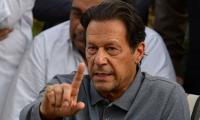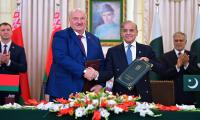The much-anticipated COP29 in Baku concluded with the ‘Baku Breakthrough, setting the stage for COP30 in Belem, Brazil. Let me build a longish context starting from COP21, the Paris Agreement, adopted in December 2015, which represents a profound turning point in humanity’s collective response to the existential challenge of climate change.
The Paris Agreement is more than just an agreement; it is a testament to the power of multilateralism, bringing together 196 parties to unite under a shared banner of ambition to limit global warming to well below 2 C and, ideally, to 1.5 C above pre-industrial levels. At the heart of this global compact lies the nuanced principle of “common but differentiated responsibilities and respective capabilities” (CBDR-RC). This principle, steeped in notions of justice and pragmatism, seeks to balance the universality of climate action with the inherent disparities among nations.
Emerging from the 1992 Rio Earth Summit, CBDR condenses the duality of the climate crisis: it is a shared problem, but one shaped and perpetuated unevenly across the globe. The historical context is indispensable here. Industrialised nations, riding the crest of carbon-intensive growth since the Industrial Revolution, bear the lion’s share of historical greenhouse gas emissions. In contrast, developing nations, many of which were still grappling with poverty and underdevelopment in the late 20th century, entered the climate dialogue with minimal emissions but significant vulnerabilities. CBDR initially reflected this dichotomy, casting developed nations as the primary actors for mitigation, while developing nations were granted leeway to prioritise economic growth.
However, the world does not stand still. The rapid industrialisation of nations like China, India, and Brazil blurred the once-clear lines between ‘developed’ and ‘developing’. These emerging economies transitioned from being peripheral emitters to central players, challenging the rigidity of the traditional CBDR framework. The Paris Agreement masterfully recalibrated this principle by introducing a flexible yet binding universality, engaging all nations while acknowledging their unique circumstances.
At its core, the Paris Agreement affirms the shared nature of the climate crisis, emphasising that no nation is insulated from its impacts or absolved of responsibility. This universality is enshrined in its ambitious goals. The directive to limit global warming to 1.5 C above pre-industrial levels serves as an existential imperative. The pursuit of net-zero emissions by the second half of the century underscores the need for transformative systemic change, akin to rewiring the engines of modern civilisation. And the commitment to enhance resilience reflects a recognition that adaptation is not a luxury but a necessity, particularly for the most vulnerable.
The architecture of the Paris Agreement, built on nationally determined contributions (NDCs), epitomises inclusivity. Yet this inclusivity, while laudable, introduces challenges of consistency and accountability. The disparity in the ambition of NDCs underscores a paradox: while the agreement demands unity, its execution often reflects the fragmented realities of geopolitics and domestic priorities.
Equity, the lifeblood of CBDR, finds expression in the Paris Agreement’s differentiated approach. Climate Finace (now, New Collective Quantified Goal), planned as a conduit for this support, embodies this ethos. Yet its aspirations have faltered against the hard rock of financial shortfalls. The unfulfilled promise of $100 billion annually in climate finance by 2020 has not only strained North-South relations but also cast a shadow over the broader commitments of the developed world. Now, the NCQG has set bar high as much as 300 billion USD at COP29.
For nations on the frontlines of climate impacts, such as Small Island Developing States (SIDS) and Least Developed Countries (LDCs), the differentiation in responsibilities extends to addressing existential vulnerabilities. Provisions for loss and damage, while symbolically significant, remain underfunded and mired in procedural complexities. This dynamic is akin to a lifeboat that promises safety but arrives half-built, leaving the most vulnerable to fend for themselves in a storm not of their making.
The operationalisation of CBDR within the Paris framework is fraught with challenges, each revealing the tension between equity and efficacy. The voluntary nature of NDCs, while fostering inclusivity, often results in ambitions that fall short of the collective goals. The rise of emerging emitters and climate induced loss and damage in developed countries like Spain further complicates the narrative. Insufficient climate finance aggravates these tensions, undermining trust and limiting the capacity of vulnerable nations to implement meaningful action.
The conclusion of COP29 highlighted the persistent disparities in global climate negotiations, with the $300 billion annual commitment by 2035 being labeled as insufficient by many developing nations. While this amount marks an improvement over the current $100 billion annual contribution, it is far from adequate to address the scale of adaptation and mitigation challenges those vulnerable countries face.
The dissatisfaction stems from the mixed composition of the pledged amount, blending grants and loans, and from the frustration that wealthier nations withheld their final proposals until the last moments of negotiation. The discontent voiced by delegates from Climate Vulnerable Forum (CVF) resonates with the broader sentiment of the Global South, including Pakistan, which frequently experiences the devastating impacts of climate change yet lacks the financial capacity to respond effectively.
The geopolitical dynamics of COP29 revealed the shifting balance of climate leadership. With the anticipated absence of consistent US participation under a potential Trump administration, China emerged as a significant actor. Although China remains classified as a developing country and holds no formal obligations to provide climate finance, its voluntary contributions and increasing transparency signaled a more proactive role.
For nations like Pakistan, this could open new avenues for bilateral cooperation in green financing and technology transfers. However, the broader structural inefficiencies of the COP process were also evident. The hosting of the conference by Azerbaijan, a country heavily reliant on fossil fuels, though symbolized a disconnection between the COP’s stated goals and the practical realities of its execution but at the same time stresses the importance of participatory approach.
One striking feature of COP29 was the growing assertiveness of environmental activists and NGOs, reflecting a palpable impatience with the slow pace of climate action. Their vocal presence served as a reminder of the urgency required to tackle the climate crisis. This resonates with Pakistan’s advocacy on global platforms, as the country has consistently emphasised the disproportionate impacts it faces despite contributing minimally to global emissions. Yet, the broader divide between developed and developing nations threatens the unity required to combat climate change collectively. Pakistan, being one of the most climate-vulnerable countries, must navigate these fractured dynamics while ensuring its voice is heard in subsequent negotiations.
The outcomes of COP29 underscore the need for Pakistan to adopt a comprehensive and forward-looking climate action plan. To address its vulnerability, Pakistan must focus on leveraging international climate finance effectively. Strengthening its institutional capacity to access funds such as the NCQG and competitive funds like Green Climate Fund and exploring bilateral green financing arrangements with nations like China are critical steps. Simultaneously, Pakistan must prioritise the transition to renewable energy, scaling up investments in solar and wind to reduce its dependence on fossil fuels through early retirement of coal initiatives. This shift is vital not only for reducing emissions but also for addressing the chronic energy shortages that hamper its development.
Building resilience to climate impacts is equally essential. Pakistan’s recent experiences with devastating floods highlight the urgency of investing in climate-resilient infrastructure, such as advanced drainage systems and robust flood defenses. Promoting climate-smart agricultural practices and diversifying crop patterns can also mitigate food security risks exacerbated by changing weather patterns. Urban centres too require targeted interventions to manage heatwaves, water scarcity, and the unplanned expansion that compounds climate risks. These efforts must be supported by strong institutional frameworks, with data-driven policymaking and strict enforcement of environmental laws ensuring progress toward national climate goals.
Engaging communities and fostering public-private partnerships are crucial to the success of Pakistan’s climate strategy. Large-scale awareness campaigns can promote energy conservation and sustainable practices, while local governments and communities should be empowered to design and implement adaptation plans tailored to their specific needs. On the international stage, Pakistan must strengthen its alliances with other vulnerable nations to advocate for equitable climate finance and loss-and-damage compensation. The lessons from COP29 underline the importance of unified, collective action and the need for reformed and inclusive processes in future climate negotiations.
The path forward for Pakistan lies in adopting a multidimensional approach that integrates mitigation, adaptation, and resilience-building efforts. By capitalising on global commitments, fostering domestic innovation, and empowering communities, Pakistan can address its climate challenges while setting a precedent for sustainable and equitable development. The urgency of the crisis demands that Pakistan act decisively, not only to safeguard its people and ecosystems but also to contribute meaningfully to the global fight against climate change.
Twitter/X: @Khalidwaleed_ Email: khalidwaleed@sdpi.org The writer has a doctorate in energy economics and serves
as a research fellow in the Sustainable Development Policy Institute (SDPI).
Most SOEs such as PIA, may have a negative net worth too, based on their earnings potential
Fortunately, after a decade’s struggle with smog, Pakistani Punjab has understood the urgency of climate action
Recent COP29 summit underscored several emerging opportunities in global climate action
Analysis of registered candidates reveals that many come from 15 districts affected by floods, poverty and poor...
US-Pakistan relations need to steer clear of the global power competition that dominates geopolitical landscape
Right to privacy is fundamental human right, backed by Quran and Hadith, to maintain dignity







